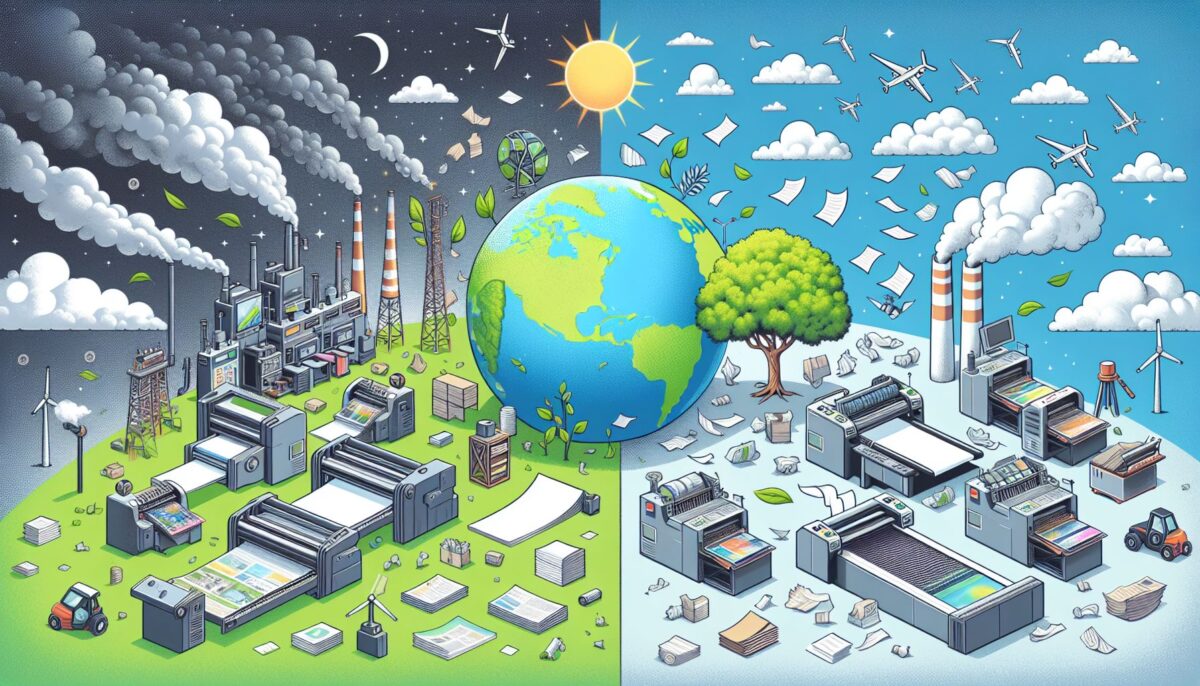In today’s world, sustainability is more important than ever. With the increasing threat of climate change and the need to preserve our planet for future generations, it is crucial that every industry takes steps to reduce its environmental impact. One industry that has made great strides in recent years is the printing industry.
Printing, once considered a major contributor to waste and pollution, has now evolved to embrace sustainability practices. From using eco-friendly materials to implementing energy-efficient processes, printers are now focused on reducing their carbon footprint and promoting a greener future. In this blog post, we will explore the various ways in which the printing industry is becoming more sustainable and how businesses and consumers can make eco-friendly choices when it comes to their printing needs.
Sustainable Materials
One of the key ways in which the printing industry is reducing its environmental impact is by using sustainable materials. Traditional printing methods often rely on paper made from virgin wood pulp, which contributes to deforestation and habitat destruction. However, many printers are now turning to alternative materials such as recycled paper, which is made from post-consumer waste and requires less energy and water to produce.
In addition to recycled paper, printers are also using eco-friendly inks that are made from plant-based or water-based materials. These inks are less harmful to the environment and produce fewer volatile organic compounds (VOCs) than traditional petroleum-based inks. By choosing to print with sustainable materials, businesses can reduce their carbon footprint and support the shift towards a more eco-friendly printing industry.
Energy-Efficient Processes
Another important aspect of sustainability in printing is the use of energy-efficient processes. Traditional printing presses require a significant amount of energy to operate, leading to high electricity bills and increased carbon emissions. However, many printers are now investing in eco-friendly printing equipment that is designed to reduce energy consumption and minimize waste.
One example of energy-efficient printing technology is the use of digital printers, which use less energy than traditional offset printers and produce less waste. Digital printing also allows for on-demand printing, which reduces the need for large print runs and minimizes excess inventory. By implementing energy-efficient processes, printers can not only reduce their environmental impact but also save money on energy costs in the long run.
Sustainable Practices
In addition to using sustainable materials and energy-efficient processes, printers can also implement sustainable practices to further reduce their environmental impact. One common practice is the use of soy-based or vegetable-based cleaning solutions, which are less harmful to the environment than traditional chemical cleaners. Printers can also reduce waste by offering recycling programs for paper and ink cartridges and by encouraging customers to print only what they need.
Furthermore, printers can work towards becoming certified as sustainable businesses through programs such as the Forest Stewardship Council (FSC) or the Sustainable Green Printing Partnership (SGP). These certifications require printers to meet specific environmental standards and demonstrate a commitment to reducing their carbon footprint. By implementing sustainable practices, printers can not only improve their environmental impact but also attract eco-conscious customers who are looking to support green businesses.
Making Eco-Friendly Choices
As consumers, we also have a role to play in promoting sustainability in printing. By choosing to work with printers that prioritize sustainability, we can support the shift towards a greener printing industry. When selecting a printer for your next project, be sure to ask about their use of sustainable materials, energy-efficient processes, and eco-friendly practices. Look for printers that are certified as sustainable businesses and that demonstrate a commitment to reducing their environmental impact.
In addition, consider ways to reduce your own printing needs and minimize waste. Opt for digital copies whenever possible, and only print documents that are truly necessary. Use recycled paper and eco-friendly inks in your printing projects, and be sure to recycle or compost any paper or ink cartridges that you no longer need. By making eco-friendly choices in your printing habits, you can help support a more sustainable printing industry and protect the environment for future generations.
Conclusion
Sustainability in printing is no longer just a buzzword – it is a crucial aspect of the industry’s future. By using sustainable materials, implementing energy-efficient processes, and practicing eco-friendly habits, printers can reduce their environmental impact and support a greener future. As consumers, we can also make a difference by choosing to work with printers that prioritize sustainability and by making eco-friendly choices in our printing habits. Together, we can help promote a more sustainable printing industry and protect the planet for generations to come.

